5 Symptoms of a Bad Control Arm Bushing (and Replacement Cost)
Control arm bushings are the critical cushioning components connecting a vehicle’s suspension to its frame. When worn, these small parts can greatly impact steering, alignment, and ride comfort.
Recognizing the symptoms of a bad control arm bushing can mean the difference between a minor inconvenience now versus a major headache later on.
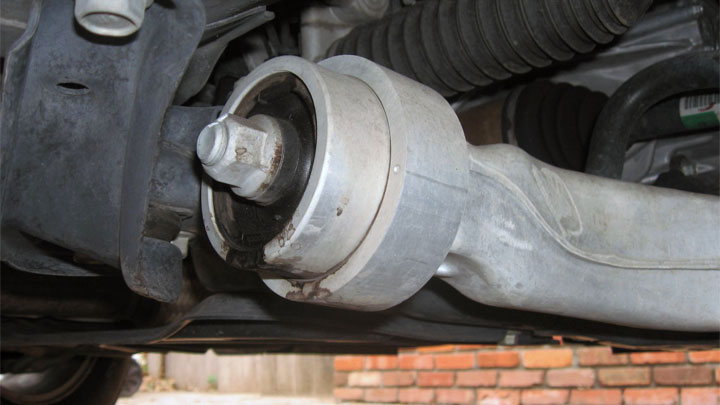
How a Control Arm Bushing Works
The purpose of a control arm bushing is to reduce the amount of vibration created between the frame and the wheels and to keep the control arm aligned. Limited vibration makes for a comfortable drive with minimal unpleasant disturbances.
Without functional bushings, metal-on-metal contact is inevitable which causes increased vibration, driving discomfort, and other irritating and potentially dangerous problems.
Bad Control Arm Bushing Symptoms
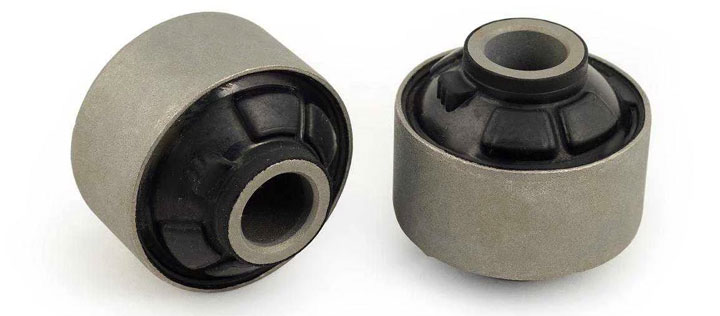
Like most parts of your vehicle, the control arm bushings are going to wear out after a while. Wear can be accelerated by harsh driving conditions such as offroading, environmental factors, or by driving with aftermarket tires such as “plus-sized” tires.
These tires transfer more vibrations to through the bushings because they have a short sidewall in order to fit over a rim with a larger diameter.
Once bushings start to wear, you can expect a lot of problems to arise while you’re driving. Some of the most common signs are explained below.
Read Also: 3 Symptoms of a Bad Sway Bar, Link, or Bushing
#1 – Vibrating Steering Wheel

When a control arm bushing begins to go bad on your vehicle, likely the first symptom you will notice is increased vibrations often felt in the steering wheel.
Usually the vibrations will intensify when accelerating, which can quickly become annoying. This is due to wobbly wheels because of excess play in the system.
#2 – Clunking/Banging Sounds

When the control arm bushings become too loose or worn, then you will start to hear a clunking sound coming from underneath your car, caused by the bushing getting knocked between the frame and the control arm.
This sound will increase in intensity if you’re driving over rocky or rough terrain, though even small bumps or normal hard braking can cause the banging noise.
#3 – Steering Wander
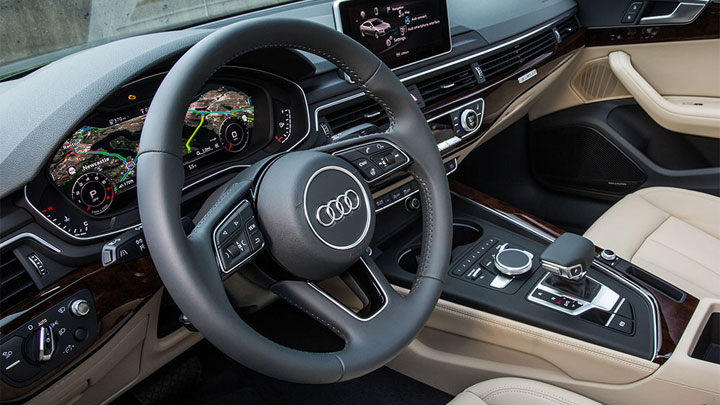
A steering wheel that pulls to either the left or right while driving can be due to misalignment caused by worn bushings. Since bushings hold the vehicle frame and control arm snugly in place, bad bushings leave room for abnormal and excess motion in the system which misaligns the wheels.
Even though the worn bushings cause misalignment in the suspension, getting an alignment done will not work if worn bushings are the cause as the components won’t hold position. When the vehicle is up on the lift or jacks, be sure to inspect the bushings for damage or abnormal movement.
#4 – Uneven Tire Wear

Examine the tire tread on your vehicle regularly to check for uneven tread wear. This problem usually indicates an issue with the alignment, and as explained above the alignment can be affected by worn bushings.
The vehicle can also show “normal” or “within range” specifications when being professionally aligned and still have uneven tire wear in this case.
#5 – Unstable Braking
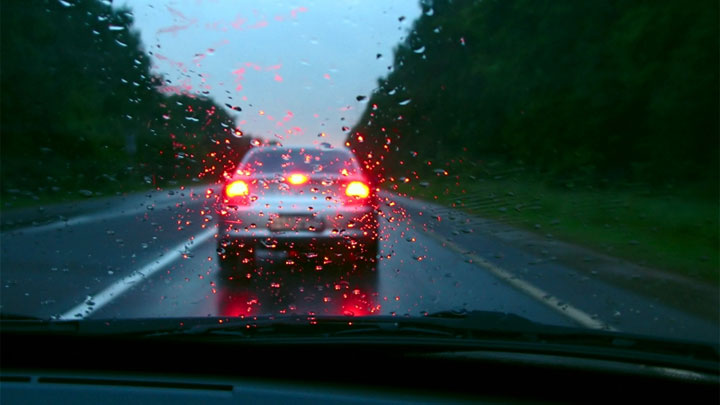
Control arm bushings are not directly involved in the braking system, but any instability in the suspension and steering components can cause problems with braking.
When braking suddenly, the front end of the car may continue to oscillate back and forth as the car slows.
Common Causes of Lower Control Arm Bushing Noise
Someone who is unfamiliar with cars might not understand what is happening when they hear strange clunking noises. Although there are many reasons for why abnormal noises might occur in a vehicle, a problem with the lower control arm bushing will create very distinct noises.
These noises almost resemble a knocking sound from around the control arm area. Here are five of the most common causes of lower control arm bushing noise:
#1 – Worn Bushing
Bushings do not last forever. The more mileage that is put on your vehicle, the more excessively worn your lower control arm bushing gets.
You will first start to hear a light clunking sound but as the bushing gets more worn, the clunking sound will get louder and more consistent.
#2 – Loose Bushing
If you have a loose lower control arm bushing, then it will get knocked around between the metal components that surround it. This might not necessarily mean the bushing is worn.
Perhaps you drove over a bump which loosened it. Either that or a mechanic may have accidentally loosened it while working on another area of your vehicle.
Whatever the reason, loose bushings will consistently make the same knocking sounds.
#3 – Broken Bushing
A lower control arm bushing could break from being too worn out. It could also have been damaged accidentally by a mechanic who was working on something else.
A broken control arm bushing will create very loud clunking noises, which won’t be gradually louder like the worn bushings.
#4 – Driving on Uneven Terrain
If you drive over uneven terrain, such as gravel or a rocky road, then the knocking or clunking sounds that you hear will be amplified.
A bushing in good condition would not get loosened or rattle around from driving over this kind of terrain. But if the bushing is not secured in its place, the erratic motion of the vehicle as it drives over this terrain could make the bushings loosen more.
#5 – Hard Acceleration
If you have loose bushings, then you will hear the knocking noises the loudest as you’re taking off from a standstill. For example, when your vehicle is parked somewhere, and you switch the gear to drive and then floor the gas pedal, then the knocking will be the loudest at this point.
Can You Fix a Noisy Control Arm Bushing Without Replacing It?
If the bushing is just loose, then it was either knocked loose or not installed correctly. Chances are, you’ll be able to save this bushing by just tightening it.
However, in most situations, your bushing will be worn out and you will have to replace it. Either way, you should take your vehicle to your mechanic, so they can perform this repair or replacement job for you.
It is not a good idea to ignore the clunking or knocking noises because this could lead up to a steering malfunction where you won’t be able to control your vehicle’s direction anymore. It is best to get the problem solved at your earliest convenience.
Control Arm Bushing Replacement Cost
Best places to order parts? See: 19 Best Online Auto Parts Stores

The cost to replace a control arm bushing will vary greatly depending on the make and model of your vehicle. The cost for a new bushing ranges between $5 and $150, while the average labor costs are between $100 and $300. This means you’re looking at a total of between $105 and $450 for one bushing replacement.
Usually fees and taxes are added on, and you may need to replace other suspension components at the same time or have an alignment done.
When replacing suspension components, it is possible you may not need an alignment if the ride height stays the same and any eccentric bolts are left alone, but ultimately this is up to the mechanic’s professional opinion (and the factory manual).
To find the best deal, shop around at different auto parts stores. This job can sometimes be done by an experienced home mechanic but it may be difficult to remove the old rubber bushing.
Replacing Control Arm Bushings
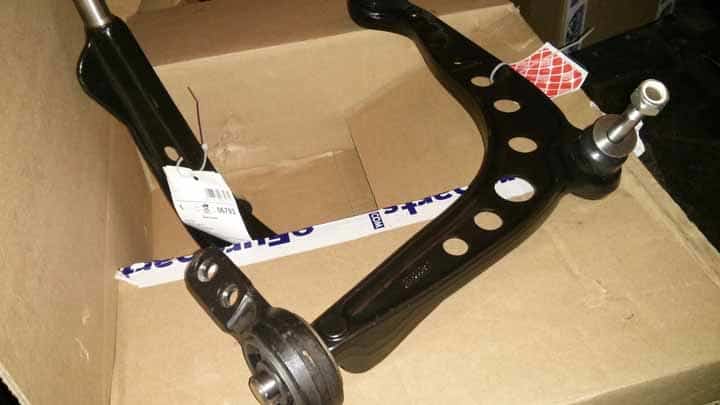
It is best to replace all of the control arm bushings at once as when one is worn, it’s likely that the others will soon follow. Check the bushings visually for visible damage such as tears or hollowing of the rubber.
Make sure the ball joints are inspected as the bushing replacement is done, as some of the symptoms can also indicate a failing ball joint. This can be disastrous as the front wheel can completely detach if the ball joint breaks while driving.
Which control arm bushings you use to replace the worn ones depend on how you intend to use your car. OE (original equipment) bushings are made of rubber and provide the most comfortable driving experience.
Aftermarket performance bushings are usually made of polyurethane and increase precision in handling but also make for a firmer ride. These need regular (every two years or so) lubrication for optimal function as the lubricant is lost over time.
Some aftermarket bushings are made of steel, and these are only good for a completely flat racetrack as they provide no control over vibration.
- Replace the Engine or Replace the Car? (11 Factors to Consider) - Apr 11, 2024
- Plastic Piece Dragging Under Your Car? (What It Is and What To Do) - Mar 21, 2024
- Timing Belt vs Timing Chain (What’s the Difference?) - Feb 27, 2024

Hi I’ve had my back left bearings and bearing hub replacement rear brakes done, 4 months later my 15 month old tyres had worn nearly to the steel belts. I took it back to mechanic after replacing the two back tyres and asked if they did a new wheel alignment,they told me that they didn’t remove all the wheels but the invoice says different. the bushings now need doing. Am I entitled for compensation regarding my tyres and wheel alignment
I don’t know; I am not a lawyer. Before going that route, talk to the shop about the situation. A legitimate shop should try to make it right.
I like how in this article, it’s describing the body as a skeletal system, I was able to understand the article written, as I was reading it and didn’t have to read over it a bunch of times to understand it in detail, havin little knowledge about underneath my vehicle… I have a 2007 Honda crv all wheel drive, I absolutely love this vehicle but I’m financing it from a place that tried to hide the fact that it is a rust bucket underneath, everything is getting worse, the noises concern me,that my car might fall right out from under me or somethin and now the shaking ,vibration has worsened so much that I couldn’t make out what kind of vehicle was behind me thru the rear view mirror. the man that I had checking it out , whom started to check on the weld he had done to the caliber of the back brake pad prior to today… I heard him mention that my bushings were worn completely out, yet he didn’t tell me this when giving me a list of what’s needed. He is not an actual mechanic… anyhow I was hit on the front drivers side on a dirt road and since then it seems like we’ve been thru so many different tires on the passenger side, til I eventually had both front tires matched and replaced, yet now I’m hearing alotof the issue sounding like it’s coming from the rear and I’m honestly scared of driving it. While reading in your article, everything tells me that the bushings are definitely serious as my car also veers to the right if I let go of the wheel.. I feel like the car could literally fall apart, meanwhile I’m trying my best to remember all the things happening from the small crash, the noises, the steering wheel moving, to the vibration…. I’m wondering if you could give me a round about pricing on all these issues for my 2007 Honda crv ,so that I can get started gettin the money up before I bother a certified mechanic?? Your thoughts, please?!
Glad the article helped. How does the car handle? Generally worn bushings will lead to increased tire wear or excessive slop in the steering or suspension. Not sure what all needs to be replaced, so there’s no way I can give an accurate estimate.
Rust is also a tricky one. Surface rust is little cause for concern. Frame rust is. Depends on where the rust on your car is. Someone is going to have to look underneath the car to give you a better idea of what the next steps should be.
This article provided some great information, and Sean’s replies in the comments are invaluable. Thanks!
Thanks, glad I could help!
hi i have a 2014 mazda 6 and when i try over uneven surfaces i can hear a slight knocking sound coming from under the car, i have also just started to hear a strange rubbing / squeaking sound coming from the steering wheel when turning although this doesnt always happen. i am guessing it could maybe be the lower suspension arms need replacing. what do you think?
I would blame the control arm bushings before I would blame the control arms themselves. Bushings wear out over time.
It could also be your sway bar end links, but that will be pretty easy to identify by a mechanic once the car is up in the air.
I have a 2016 BMW X5 with 72,000 miles. My car was driving great and I had to take it into the dealership because of an AC issue. They fixed that and said the car needed 2 new rear tires. They replaced them and then aligned the car/tires. Now the car drives all over the place and is scary on the freeway. I went to the BMW and now he says the front bushings need to be replaced to the tune of $1300. I find it strange that all of a sudden the bushings need to be replaced after they replaced the tires and aligned the tire/car.
Did they show you the new alignment specs? I would guess that either something went wrong with the alignment, or the alignment revealed that the bushings were old and prevented them from aligning the car correctly. It’s definitely suspicious to have them quote you for new bushings after you went in a second time, though. I might go somewhere else for another opinion.
Hi Am driving a Polo vivo.
When l hit the speed humps l receive bad noise on the passenger side. The noise is like “kuch” or like a dry something.
Can you assist.
No, unfortunately that’s probably going to require an in person diagnosis. There are several things that could make a noise like that. Front suspension, steering components, wheels, or tires to name a few.
I have a 2009 Hyundai sant fe 3.3
Just tried to get my front tires replaced and was told that they won’t do it as my car is unsafe. My front end requires 2 lower control arms,I’m guessing will need ball joints and bushings, the car has 375000 km is it even worth fixing it? If so what would be the best way to keep costs down I also was told that I have a minor oil leak and that my back tires need replaced also ( I personally don’t think they do)
Defer to the shop’s judgment. If they tell you your car is unsafe, you’re best following their recommendations to make sure the car is road worthy. The minor oil leak can probably wait if you’re strapped for cash.
Only you can determine if it’s worth fixing. You’ll have to weigh the cost of the repair against the cost of another car. Know also that buying a used car is probably going to come with it’s own repairs. Sometimes it’s best sticking with the car you know, because you’re more familiar with its maintenance history.
Hi, Glad I found this site. I have a 2010 Mercedes C 350 with 174000 miles on it. Just noticed a slight knocking noise near the right rear tire. Shook the car side to side and there is definitely a rattle knocking sound like something is loose..so definitely going to get it tightened. But the very funny thing is that I had the dreaded EBD, ABS, AND ESC sensor come on and stay on…but when we shook the car side to side to figure out the new knocking sound, those EBD, ABS, AND ESC sensors were cleared! LOL..I SHOOK the problem out!
Check your axle nut and your wheel bolts. It is very important you get this addressed as soon as possible. It’s not really a laughing matter; to me, it sounds like a serious safety concern that is likely to cause an accident, and if I were you I would not drive the vehicle until I knew exactly what was wrong and fixed the problem.
Thank you so much
I purchased a used 2013 Escape and I noticed that when you accelerate or decelerate, the car pulls to the right or left…feels like when the wind catches your vehicle and pushes you one way or the other, but it’s not windy. It’s horrible on winding roads where there is constant pushing and letting off of the gas. You have to constantly hold the wheel tight because you don’t know when it’s going to jerk you. The dealer tells me this is normal for the type of transmission these Escapes have. It has the EcoBoost. I brought it back to them because it seems dangerous and they said they did an alignment on it and don’t notice anything else. I call BS because it is bad. I took it to a mechanic friend of mine and he only had to drive it for a minute before he brought it back saying there is definitely something “wonky” with it. He couldn’t take much time to look at it but said the right control arm bushing was loose and there’s no way the dealer did an alignment with that loose. So on top of being lied to from the dealer, I now have to take it BACK again to them to have them work on it. It’s an hour drive and I’m tired of going there, but I feel like I’ve been scammed by both the salesman and mechanic who keeps telling me there’s nothing wrong with it. There is NO way you can miss this problem. I’d like to know if this sounds like a bushing/control arm issue before I take it BACK again so I know what to tell them to look at since they apparently don’t know!
This is definitely not normal, and it sounds like the dealer is pulling a fast one on you. Sounds like a bad tie rod, wheel bearing, or simply a bad alignment, but I wouldn’t be surprised if that bad control arm bushing alone could cause the symptoms you are experiencing.
I would consider going to an external shop to get it fixed if you can. The dealer would lose my trust after this incident.
I have a 2012 Ford Taurus limited. The driver-side lower control arm is starting to make a clunk/knock noise when I brake or accelerate. So I’m going to replace it. The car is in mint condition and still runs like a dream. However, it has 246000 miles on it. Should I go ahead and replace both left/right lower control arms instead of doing just one? To me they both have some wear/tear.
Inspect both and replace if necessary. Sounds like there may be a bushing or two that has rotted out over so many miles.
I have a 2013 Nissan Maxima. I got my front lower control arms replaced in June 2019. This included sway bar link and bushing. I also got front struts and mounts on the left and right.
My car is pulling to the right when accelerating and I feel vibration in the wheel when at 60mph.
I took it to the dealer and was told I need to replace my front control arms on both sides. Cost $1500. The original work was done by another auto shop.
This doesn’t seem right to replace these parts so soon.
That does seem strange. I wonder if the eccentric bolts came loose when they did an alignment after replacing your front lower control arms. They did do an alignment when they did the installation, didn’t they?
I would get a second opinion from an independent shop, perhaps a different one than who originally changed out the control arms.
How do i place an order online?i need ball joints & bushings for chev cruze 1.6 2012
We do not sell car parts. You will have to visit an online store such as Amazon for that.
Ford Dealership did an airbag replacement recall for me and during their standard inspection they said my lower control arm and bushing is in beginning stages of needing replacement. I have 2012 ford fusion with 60k miles and i was quoted $1255 for FS26 lower control arm and bushing with wheel alignment. This seems much higher than what I’mreading online. My car was never in an accident. I drive in Michigan. Wondering why my control arm and bushing would already be worn down.
60k miles seems pretty darn low for a control arm bushing to start to go out. I would at least get a second opinion on that.
thank you for the information, I almost got ripped off.
How long does it take to replace the lower arm bushes on a mazda 3 2006 model 1600
That will depend on your mechanical ability. You will likely need a press to get the old bushings out.
Don’t make excuses for failure, just find a way for success
I have a 2013 Toyota Yaris it has “Front Lower Control Arm Bushing Torn. with Alignment” My cost was $1242.00. I would like to get it cheaper!
Purchase your parts online; it’ll save you almost half the cost
Thank you, very good information.!!!!!
Thank you info really helped